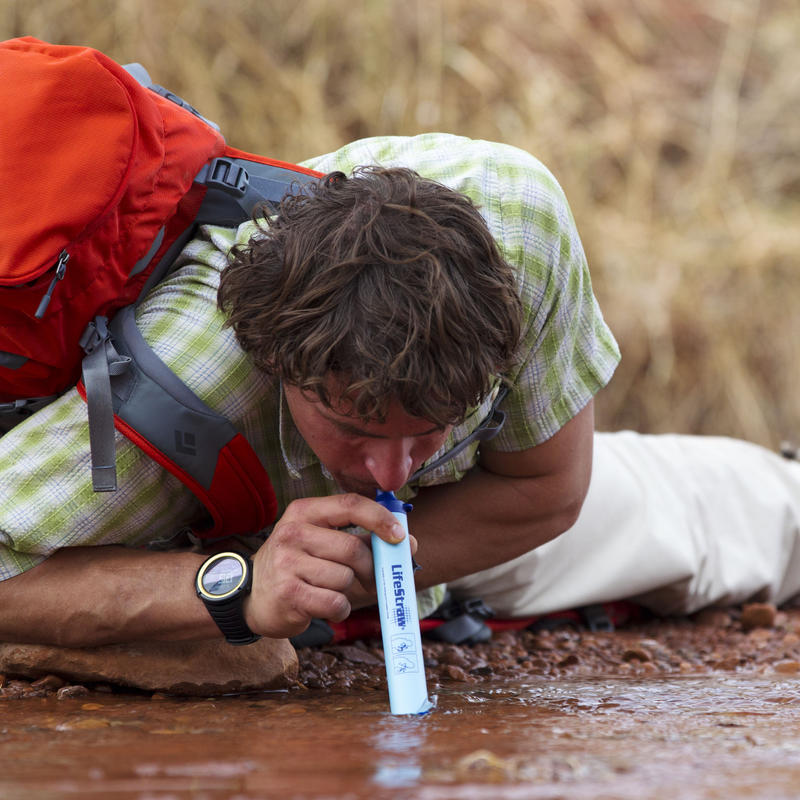
So let’s be clear: You don’t want to have to use a LifeStraw product. Much like car insurance, a home security system, or a will, the company offers a product most people would only use in a less than ideal situation. But if you ever find yourself at risk of dehydration but without a reliable source of clean drinking water, you’ll be damn glad you have one of LifeStraw’s fine filtration devices with you.
I’m a frequent enough hiker/camper, but I’m far from a serious survivalist. Still, I keep a LifeStraw personal water filter in both of my family’s cars and I include one in my gear whenever I head out to the woodlands (you never know when that hand-pumped water filter might break. I’m not expecting to be stranded miles away from clean water by a car (or society) breaking down, but if that ever happens, I’ll know that, thanks to that 5.6-ounce cylinder stashed in the glovebox, my family and I can source hundreds of gallons of clean, safe drinking water from a drainage ditch or trickling stream. Or from a suspect sink at a gas station.
If you’re only going to get one LifeStraw product, go with the original LifeStraw. It costs $20 and could be the difference between you getting sips of safe, fresh water and ingesting bacteria, poisonous chemicals, and dangerous metals. The classic LifeStraw and its similar, though more robust scion, the LifeStraw Steel, use a two-stage filtration system.
First, the water is drawn through an activated carbon capsule which filters out chemicals like chlorine, pesticides, and more. As the water continues up toward your mouth, it passes through bundled, hollow-fiber membranes in the second stage. These fibers capture up to 99.99 percent of all harmful bacteria and protozoa. By the time you have drawn water all the way up through a LifeStraw, it will not only be safe for you to consume, but it will be almost odorless and tasteless too.
Beyond the classic LifeStraw, there is the aforementioned LifeStraw Steel, which is really the same product, just housed in an almost indestructible tubular metal casing. The company has also recently branched out into LifeStraw Go water bottles fitted with a filter insert, convenient for capturing liquid from a waterfall, sink, or other source into which you can’t easily plunge a straw, as well as for transporting.
And, for larger groups needing fresh water, there are higher-volume products as well. My familiarity stops with the LifeStraw and LifeStraw Go bottle, though having used the straw several times (thankfully only for testing and for convenience, not in a survival situation), I’m confident everything they make works well. This is a company dedicated to quality above profit — both quality of products as well as quality of life. Since its early years back in the 1990s, LifeStraw has dedicated a significant portion of the company’s revenue and energies to providing safe, clean water to people living without reliable access. As the LifeStraw story goes: “It all started with the issue of safe water. Which should never be an issue.”
Originally published by Brandon Widder in May 16, 2014. Last updated by Steven John on October 10, 2017


